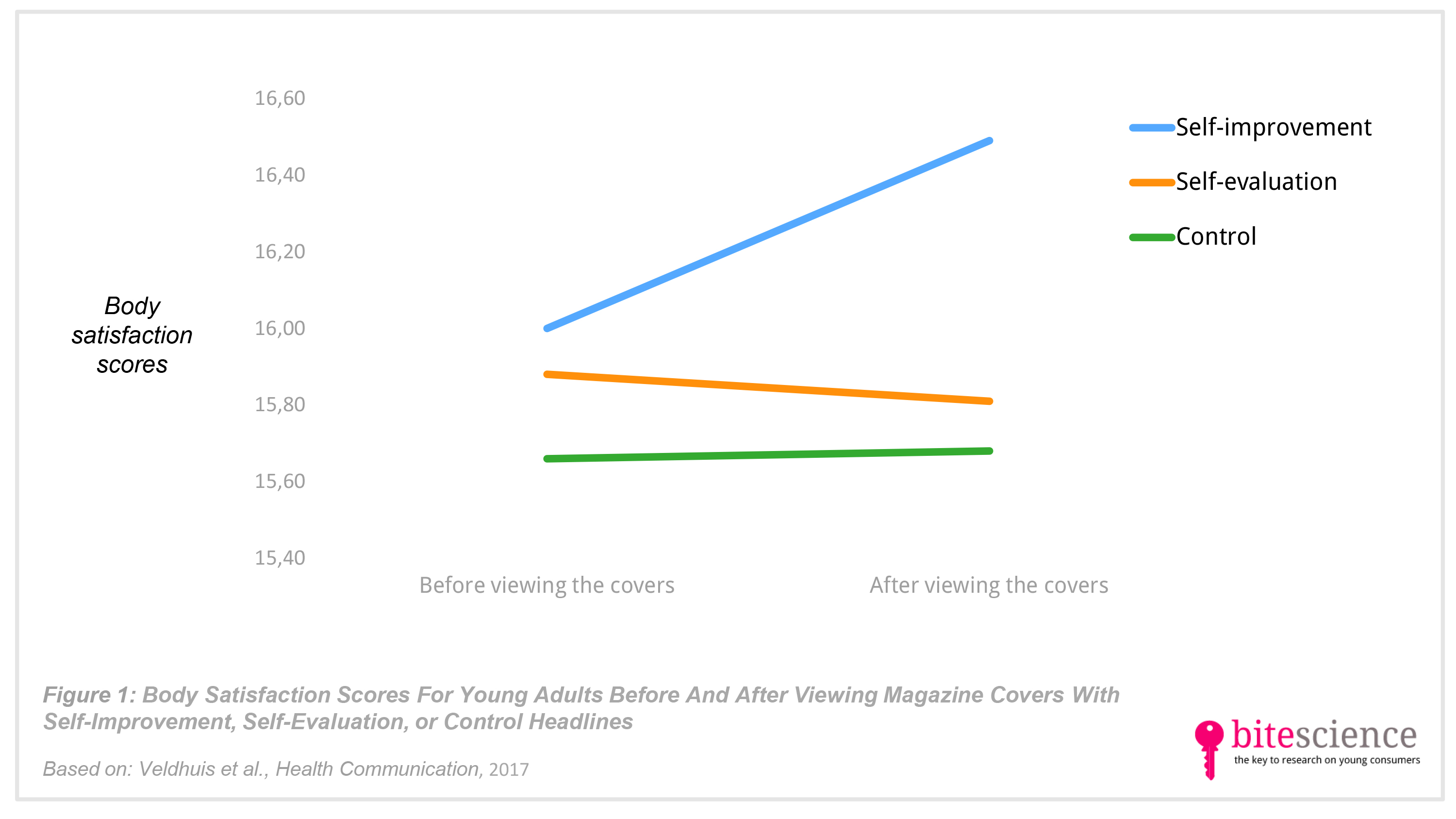
How Magazine Headlines Can Boost Young Adults’ Body Satisfaction
Popular magazines like Cosmopolitan and Men’s Health often show images of the “ideal body” on their cover. Although viewing such covers can have a negative impact on young adults, a study in Health Communication shows that this is not always the case. Young adults who read a message on a magazine cover that encourages them to improve their physical appearance, feel more satisfied with their body afterwards.
Take aways
- Magazine headlines that encourage young adults to improve their body shape and size (self-improvement messages) can make them feel more satisfied with their body.
- Headlines that prompt young adults to compare their body with that of others (self-evaluation messages) do not impact their body satisfaction.
- Media messages that inspire young adults to improve their body appearance might foster hope by offering new ideas to reach the ideal body, which can be a helpful tool for health communication interventions.
Study information
The question?
How do headlines that encourage self-improvement versus self-evaluation impact young adults’ body satisfaction when viewing magazine covers that display “ideal bodies”?
Who?
150 young adults (mean age: 21.9 years old, 67% females)
Where?
The Netherlands
How?
Young adults were recruited through various institutes for higher education in the Netherlands. Those who agreed to participate started by filling out an online questionnaire containing questions about demographic information (e.g., gender, age) and body satisfaction (i.e., how satisfied they were with their appearance, body size and shape, and attractiveness).
Participants then viewed two magazine covers portraying models with “ideal bodies” and that included one out of three types of headlines:- Self-improvement headlines included a message that told them how to get a better body shape (e.g., “Boost your body to the latest trend! Get inspired for action: The ultimate body workout!”);
- self-evaluation headlines included a message that evoked comparison of their own body with that of others (e.g., “Compare your body to the latest trend! Check if you can live up to the ideal!”);
- control headlines contained neutral messages that were not related to body satisfaction (e.g., “Take a break: 10 most relaxing tips. Plus: fun facts on dazzling holiday resorts”).
The researchers adapted the covers for males and females by using different colors (blue for males and pink for females) and models (male models for males and female models for females), and specific words (e.g., “shorts” and “muscular” for males and “bikinis” and “slim” for females). Other aspects of the layout were kept identical.
Participants in all groups could view the covers as long as they liked and decided themselves when to proceed from the first to the second cover and finally to the second questionnaire, which also contained questions about their body satisfaction.
Facts and findings
- Young adults who viewed magazine covers with headlines that encouraged self-improvement said they were more satisfied with their body after viewing these covers than before viewing them.
- They were also more satisfied with their body after viewing covers with self-improvement headlines than young adults who viewed control covers.
- Young adults who viewed magazine covers containing headlines that encouraged self-evaluation did not show a change in body satisfaction.
- The results did not differ for males and females.
- Critical note: This study only included participants that were enrolled in higher education, meaning that the results might not hold for all young adults in the Netherlands.
